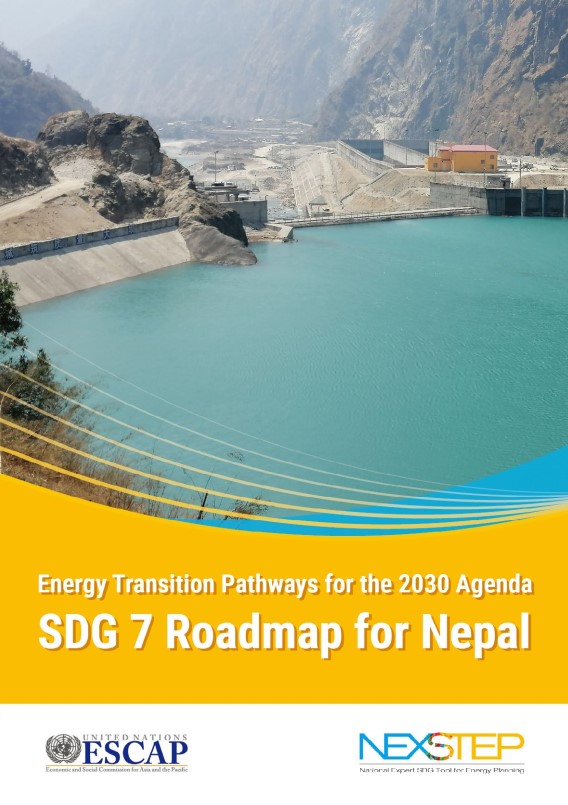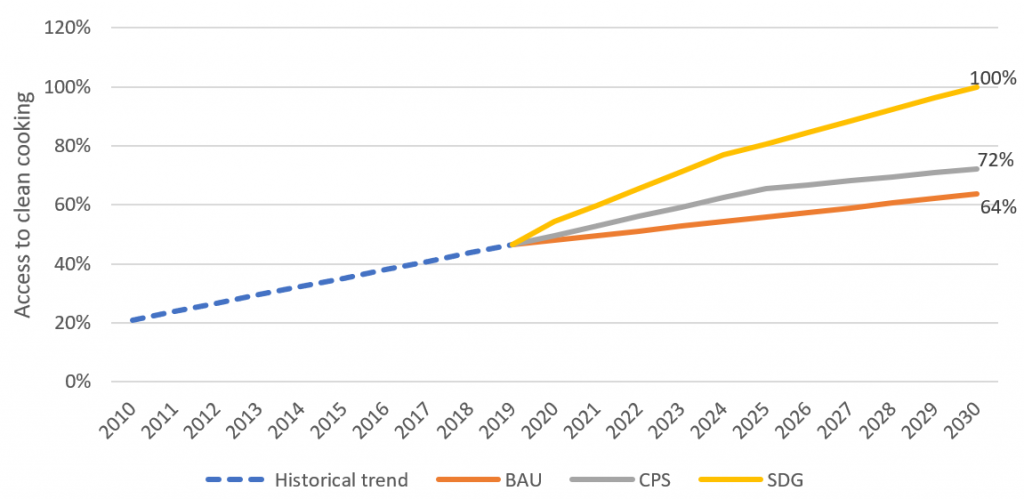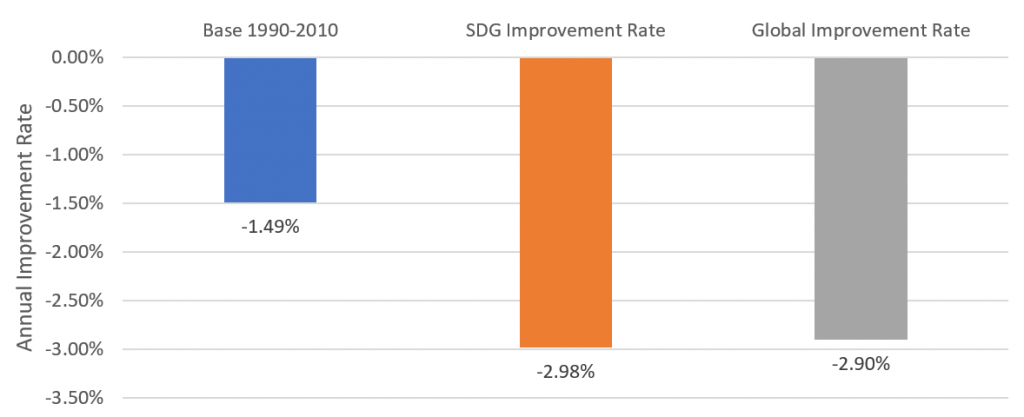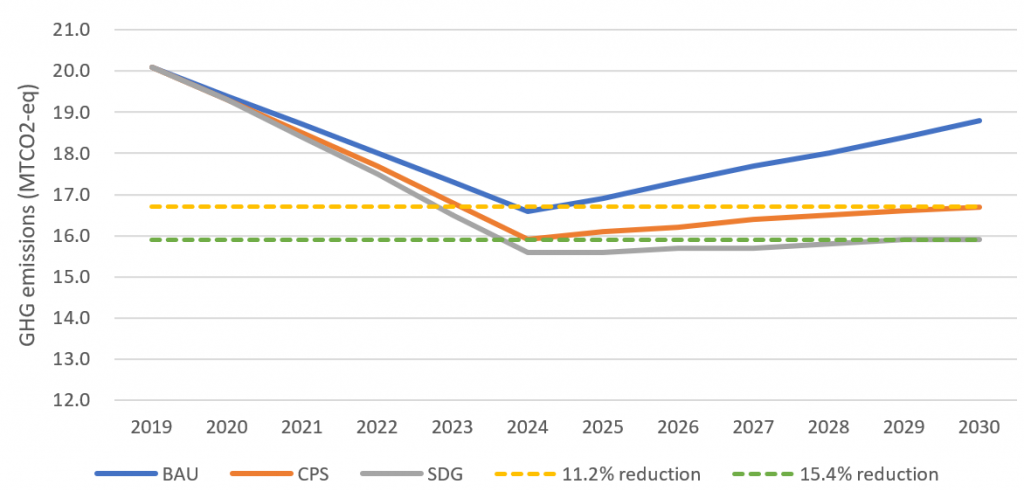Transitioning the energy sector to achieve the 2030 Agenda for Sustainable Development and the objectives of the Paris Agreement presents a complex and difficult task for policymakers. It needs to ensure sustained economic growth as well as respond to increasing energy demand, reduce emissions, and consider and capitalize on the interlinkages between Sustainable Development Goal 7 (SDG 7) and other SDGs. To address this challenge, ESCAP has developed the National Expert SDG Tool for Energy Planning (NEXSTEP). This tool enables policymakers to make informed policy decisions to support the achievement of the SDG 7 targets as well as nationally determined contributions (NDCs). The initiative has been undertaken in response to the Ministerial Declaration of the Second Asian and Pacific Energy Forum (April 2018, Bangkok) and Commission Resolution 74/9, which endorsed its outcome. NEXSTEP also garnered the support of the Committee on Energy in its Second Session, with recommendations to expand the number of countries being supported by this tool.
The key objective of this SDG 7 roadmap is to assist the Government of Nepal in developing enabling policy measures to achieve the SDG 7 targets. This roadmap contains a matrix of technological options and enabling policy measures for the Government to consider. It presents several scenarios that have been developed using national data, and which consider existing energy policies and strategies as well as reflect on other development plans. These scenarios are expected to enable the Government to make an informed decision to develop and implement a set of policies to achieve SDG 7 by 2030, together with the NDC.
The key objective of this SDG 7 roadmap is to assist the Government of Nepal in developing enabling policy measures to achieve the SDG 7 targets. This roadmap contains a matrix of technological options and enabling policy measures for the Government to consider. It presents several scenarios that have been developed using national data, and which consider existing energy policies and strategies as well as reflect on other development plans. These scenarios are expected to enable the Government to make an informed decision to develop and implement a set of policies to achieve SDG 7 by 2030, together with the NDC.
Group
Image

Section 1
Title
A. Highlights of the Roadmap
Content
Nepal has made significant progress in increasing access to electricity in recent years. Based on this progress, it is estimated that Nepal will achieve universal access to electricity by 2024, earlier than the timeline mentioned in the Sustainable Development Goals Status and Roadmap 2016-2030. However, universal access to clean cooking technology and fuel has been, and remains, a challenge as more than half of the population is still relying on polluting cooking fuels and technology. Well-planned and concerted efforts will need to be made to achieve universal access to clean cooking by 2030. Energy efficiency improvement needs to be boosted across different sectors in order to achieve a 2.98 per cent annual improvement, reducing energy intensity to 3.5 megajoules per United States dollar by 2030.
Being a landlocked country with a mountainous topography and no proven fossil fuel reserve, Nepal is heavily reliant on imported energy resources (i.e., oil products); therefore, energy security is high on the national agenda. On the bright side, Nepal’s abundant hydro resources supply two-thirds of the country’s electricity demand. Small-scale renewable energy resources – mainly micro- and mini-hydro, and solar energy – are also used in meeting the electricity demand of remote and very remote areas. In addition, in its second NDC, Nepal has set out a plan for increasing its clean electricity exports to neighbouring countries. The NEXSTEP analysis has examined the usage of fossil fuel in the country e.g., in the transport sector and identified ways for Nepal to reduce its reliance on imported fuel to safeguard its energy sector from price and supply shocks.
Being a landlocked country with a mountainous topography and no proven fossil fuel reserve, Nepal is heavily reliant on imported energy resources (i.e., oil products); therefore, energy security is high on the national agenda. On the bright side, Nepal’s abundant hydro resources supply two-thirds of the country’s electricity demand. Small-scale renewable energy resources – mainly micro- and mini-hydro, and solar energy – are also used in meeting the electricity demand of remote and very remote areas. In addition, in its second NDC, Nepal has set out a plan for increasing its clean electricity exports to neighbouring countries. The NEXSTEP analysis has examined the usage of fossil fuel in the country e.g., in the transport sector and identified ways for Nepal to reduce its reliance on imported fuel to safeguard its energy sector from price and supply shocks.
Section 2
Title
B. Achieving Nepal's SDG 7 and NDC targets by 2030
Content
1. Universal access to electricity
As of 2019, Nepal’s electrification rate is estimated to be 86 per cent. Of the portion of Nepal’s population that lacks access to electricity, 90 per cent are in rural areas. Based on the historical improvement trend between 2000 and 2019, NEXSTEP analysis indicates that the remaining population will receive access by 2024, under the business-as-usual scenario. In light of Nepal’s complex terrain, providing last-mile connectivity may not be an easy feat, and achieving it will still require continued efforts from the Government, development partners and the private sector. NEXSTEP analysis indicates that providing off-grid/mini-grid electrification systems utilizing indigenous renewable resources may be the most appropriate solution, as micro- and mini-hydro systems provide the lowest cost per unit of electricity generated.
2. Universal access to clean cooking
As of 2019, more than half of the population in Nepal still relied on polluting cooking fuel and technology, thereby exposing themselves to negative health impacts. The Government of Nepal has disseminated more than 1 million clay and metallic improved cooking stoves; in 2019, the cooking stove distributions (estimated at 15) were made to 2.7 per cent of the total households in Nepal. It is expected that the clean cooking access rate will be raised to 72.3 per cent through the current policy settings, in accordance with the targets stipulated in the second NDC document. The targets include increasing the market penetration of electric cooking stoves to 25 per cent by 2030, and further dissemination of 500,000 Improved Cooking Stoves (ICS), 200,000 household biogas digesters and 500 large-scale biogas plants by 2025. Nevertheless, more needs to be done; NEXSTEP analysis suggests that electric cooking stoves may be the most suitable long-term solution in closing the remaining gap.
3. Renewable energy
The share of renewable energy in the total final energy consumption (TFEC) was 21.3 per cent in 2019. Based on current policies, the share of renewable energy is projected to increase to 35.9 per cent by 2030. The increase is due to the projected increase both in renewable electricity and other renewable energy (excluding traditional use of biomass) consumption, while the TFEC increases at a slower rate. In the SDG scenario, the share of renewable energy is further improved to 39 per cent of TFEC in 2030. This improvement is solely due to the adoption of electric stoves while phasing out of traditional biomass usage, which also decreases the total final energy consumption.
4. Energy efficiency
Nepal’s energy intensity in 2019 is estimated to have been 4.12 MJ/USD2011. Energy intensity in Nepal has declined at an average annual rate of 1.49 per cent between 1990 and 2010. A doubling of the 1990-2010 improvement rate is required to achieve the SDG 7.3 target, which requires an average annual rate increase of 2.98 per cent between 2018 and 2030. Correspondingly, the energy intensity in 2030 should be 2.96 MJ/USD2011 to achieve the SDG 7 target.
Under the current policy settings, the energy intensity is projected to drop to 2.96 MJ//USD2011. While the energy efficiency improvement target is achieved, more needs to be done to close the clean cooking gap. The energy efficiency target is exceeded in the SDG scenario with an energy intensity of 2.46 MJ//USD2011, compared with the target of 2.96 MJ//USD2011. This is achieved simultaneously with the clean cooking target through the phasing out of inefficient cooking technologies. There are ample energy savings opportunities for Nepal, as explored in the ambitious scenario. These opportunities are discussed in later sections of this report.
4. Nationally Determined Contribution
Nepal does not have an overarching GHG reduction target but has stipulated several sectoral strategies and measures in its second NDC document published at the end of 2020. As modelled, the stipulated measures may allow Nepal to reduce its GHG emissions by 11.2 per cent, with reference to the BAU scenario. In the SDG scenario, the GHG emission is projected to be 15.8 MTCO2-e in 2030, a 15.4 per cent reduction from the BAU scenario.
As of 2019, Nepal’s electrification rate is estimated to be 86 per cent. Of the portion of Nepal’s population that lacks access to electricity, 90 per cent are in rural areas. Based on the historical improvement trend between 2000 and 2019, NEXSTEP analysis indicates that the remaining population will receive access by 2024, under the business-as-usual scenario. In light of Nepal’s complex terrain, providing last-mile connectivity may not be an easy feat, and achieving it will still require continued efforts from the Government, development partners and the private sector. NEXSTEP analysis indicates that providing off-grid/mini-grid electrification systems utilizing indigenous renewable resources may be the most appropriate solution, as micro- and mini-hydro systems provide the lowest cost per unit of electricity generated.
2. Universal access to clean cooking
As of 2019, more than half of the population in Nepal still relied on polluting cooking fuel and technology, thereby exposing themselves to negative health impacts. The Government of Nepal has disseminated more than 1 million clay and metallic improved cooking stoves; in 2019, the cooking stove distributions (estimated at 15) were made to 2.7 per cent of the total households in Nepal. It is expected that the clean cooking access rate will be raised to 72.3 per cent through the current policy settings, in accordance with the targets stipulated in the second NDC document. The targets include increasing the market penetration of electric cooking stoves to 25 per cent by 2030, and further dissemination of 500,000 Improved Cooking Stoves (ICS), 200,000 household biogas digesters and 500 large-scale biogas plants by 2025. Nevertheless, more needs to be done; NEXSTEP analysis suggests that electric cooking stoves may be the most suitable long-term solution in closing the remaining gap.

3. Renewable energy
The share of renewable energy in the total final energy consumption (TFEC) was 21.3 per cent in 2019. Based on current policies, the share of renewable energy is projected to increase to 35.9 per cent by 2030. The increase is due to the projected increase both in renewable electricity and other renewable energy (excluding traditional use of biomass) consumption, while the TFEC increases at a slower rate. In the SDG scenario, the share of renewable energy is further improved to 39 per cent of TFEC in 2030. This improvement is solely due to the adoption of electric stoves while phasing out of traditional biomass usage, which also decreases the total final energy consumption.
4. Energy efficiency
Nepal’s energy intensity in 2019 is estimated to have been 4.12 MJ/USD2011. Energy intensity in Nepal has declined at an average annual rate of 1.49 per cent between 1990 and 2010. A doubling of the 1990-2010 improvement rate is required to achieve the SDG 7.3 target, which requires an average annual rate increase of 2.98 per cent between 2018 and 2030. Correspondingly, the energy intensity in 2030 should be 2.96 MJ/USD2011 to achieve the SDG 7 target.

Under the current policy settings, the energy intensity is projected to drop to 2.96 MJ//USD2011. While the energy efficiency improvement target is achieved, more needs to be done to close the clean cooking gap. The energy efficiency target is exceeded in the SDG scenario with an energy intensity of 2.46 MJ//USD2011, compared with the target of 2.96 MJ//USD2011. This is achieved simultaneously with the clean cooking target through the phasing out of inefficient cooking technologies. There are ample energy savings opportunities for Nepal, as explored in the ambitious scenario. These opportunities are discussed in later sections of this report.
4. Nationally Determined Contribution
Nepal does not have an overarching GHG reduction target but has stipulated several sectoral strategies and measures in its second NDC document published at the end of 2020. As modelled, the stipulated measures may allow Nepal to reduce its GHG emissions by 11.2 per cent, with reference to the BAU scenario. In the SDG scenario, the GHG emission is projected to be 15.8 MTCO2-e in 2030, a 15.4 per cent reduction from the BAU scenario.

Section 3
Title
C. Important policy directions
Content
The roadmap sets out four key policy recommendations to help Nepal achieve the SDG 7 targets as well as reduce reliance on imported energy sources:
- To ensure electricity access is on track to achieve the SDG 7 target by 2024, decentralised energy generation using indigenous resources such as wind and solar power should be utilized. Given Nepal’s complex mountainous terrain and last-mile connectivity challenges, these approaches are needed to complement grid extensions;
- Electric cooking stoves should be the priority technology in improving clean cooking access. More effort is required from the Government to close the clean cooking gap. NEXSTEP analysis suggests that electric cooking stoves may be more appropriate technology, in terms of the health benefits, cost effectiveness, and little maintenance and follow-up requirements. However, comprehensive policies are required for promoting the uptake and long-term adoption of electric cooking stoves;
- Transport electrification strategies provide multi-fold benefits. Vigorous adoption of electric vehicles reduces the demand for oil products, hence reducing Nepal’s reliance on imported energy resources. At the same time, it can contribute to climate mitigation by using Nepal’s zero-carbon hydropower-based electricity;
- Energy efficiency measures should be encouraged with a whole-economy approach. Substantial energy savings can be achieved through sustainable heating technologies in the residential and commercial sectors, while utilization of efficient household appliances reduces electricity demand. Significant energy reduction can be similarly achieved through industry sector best practices.
